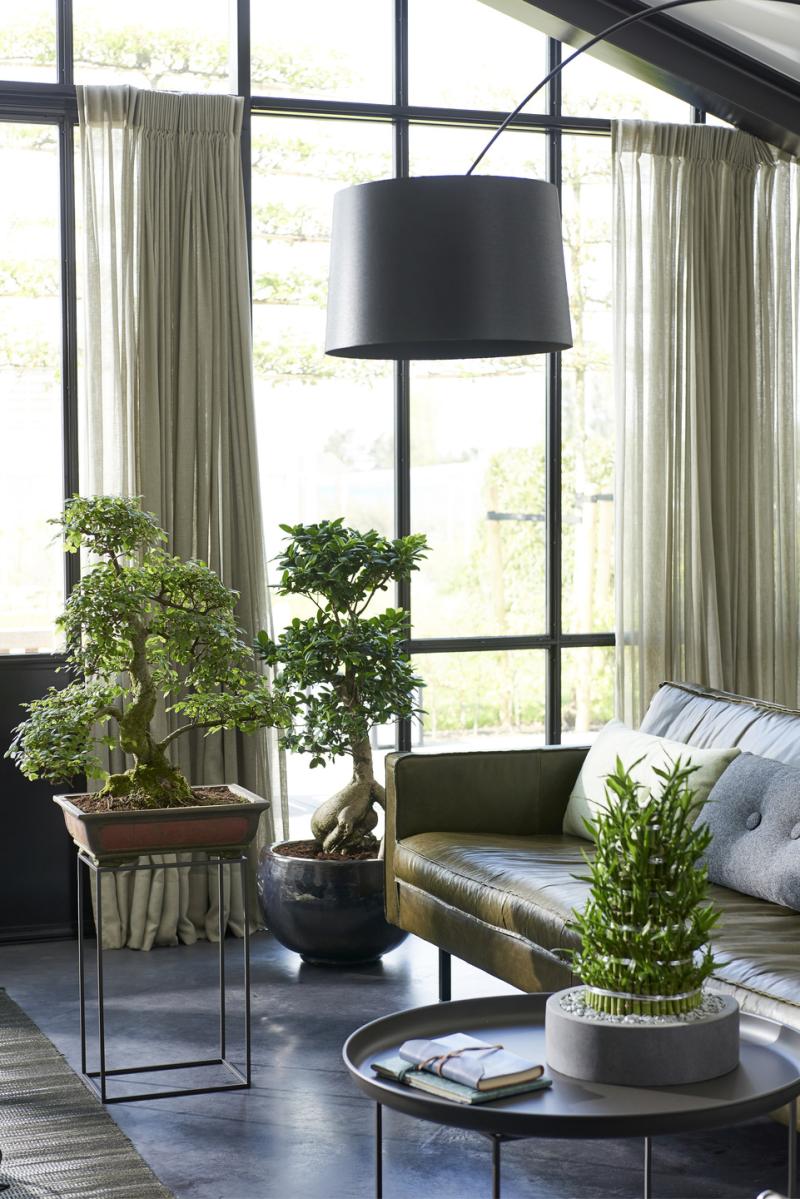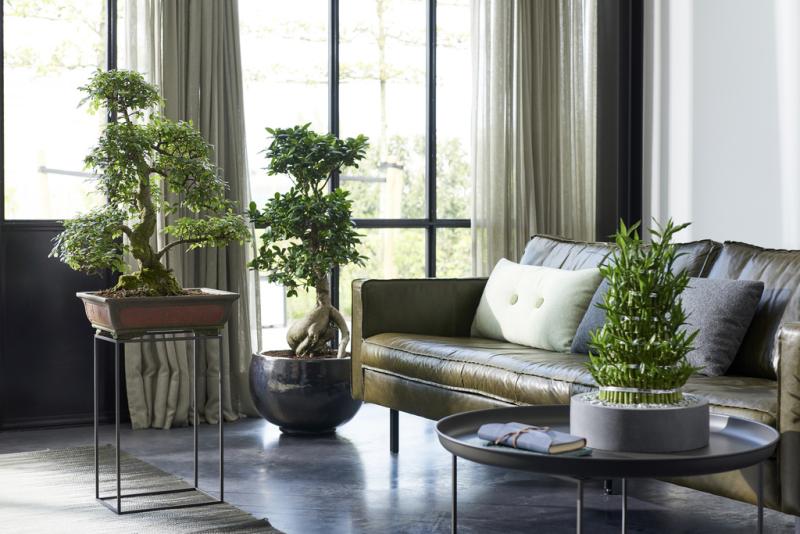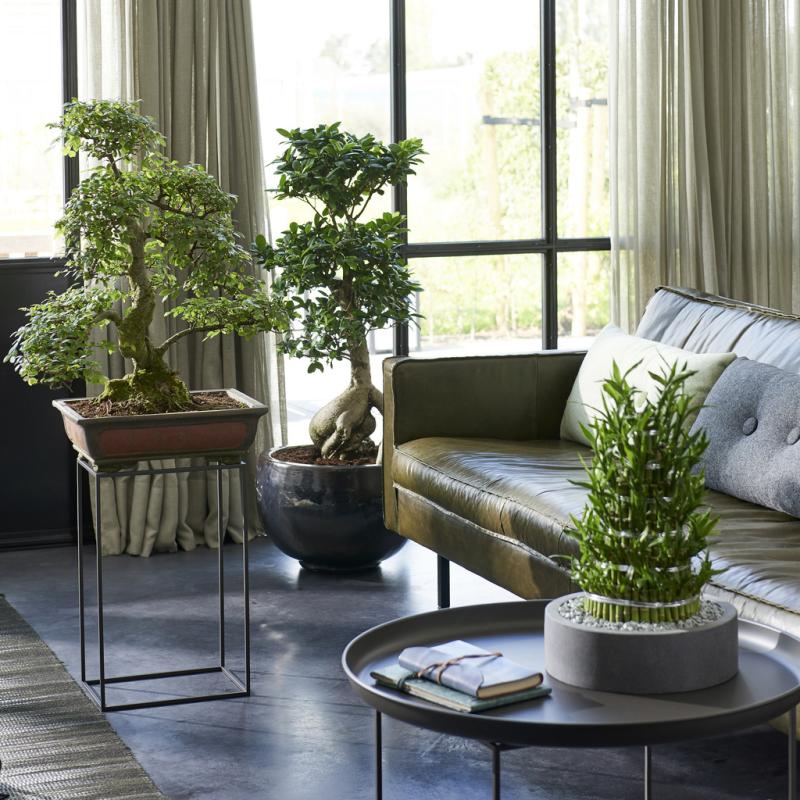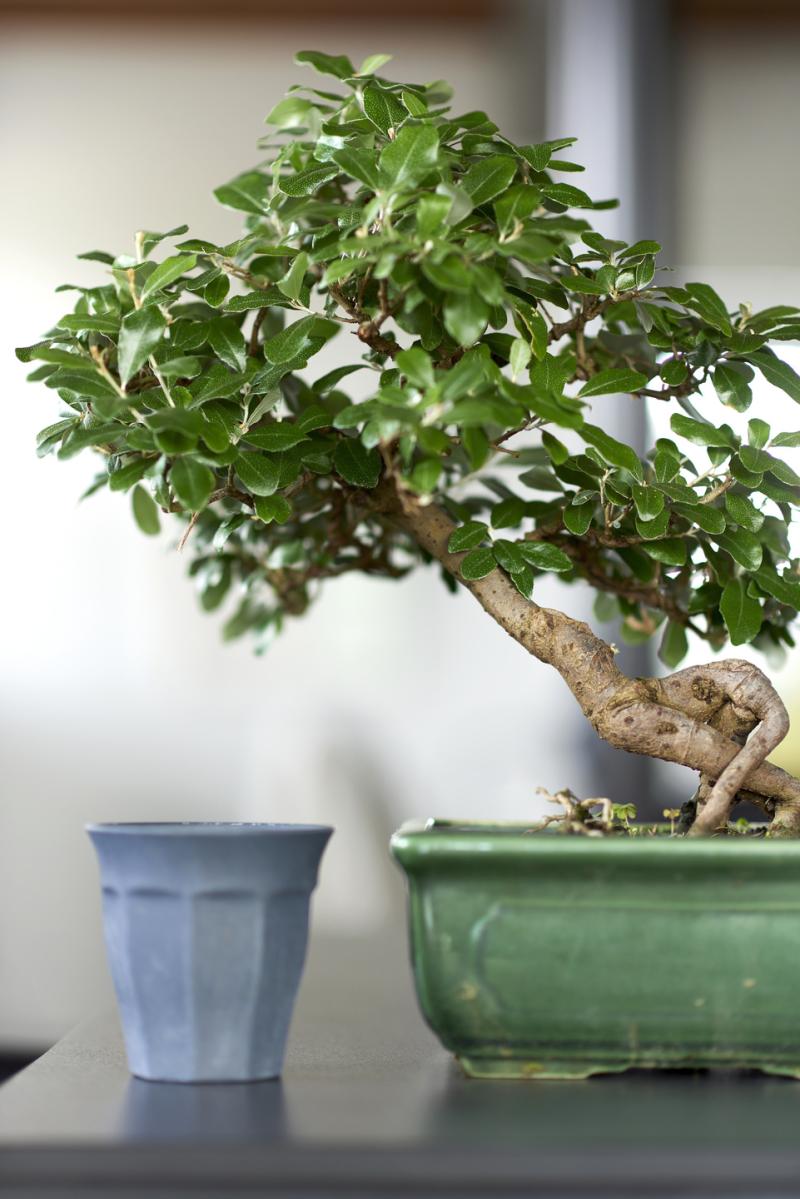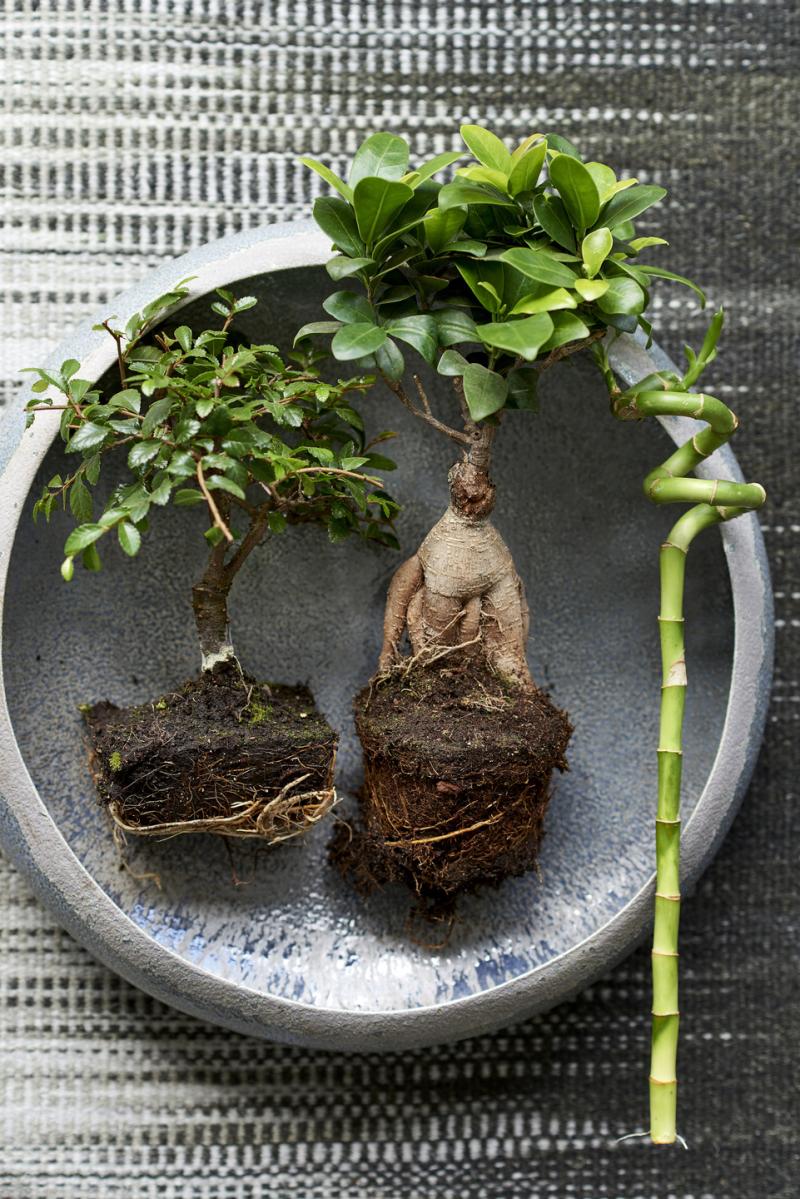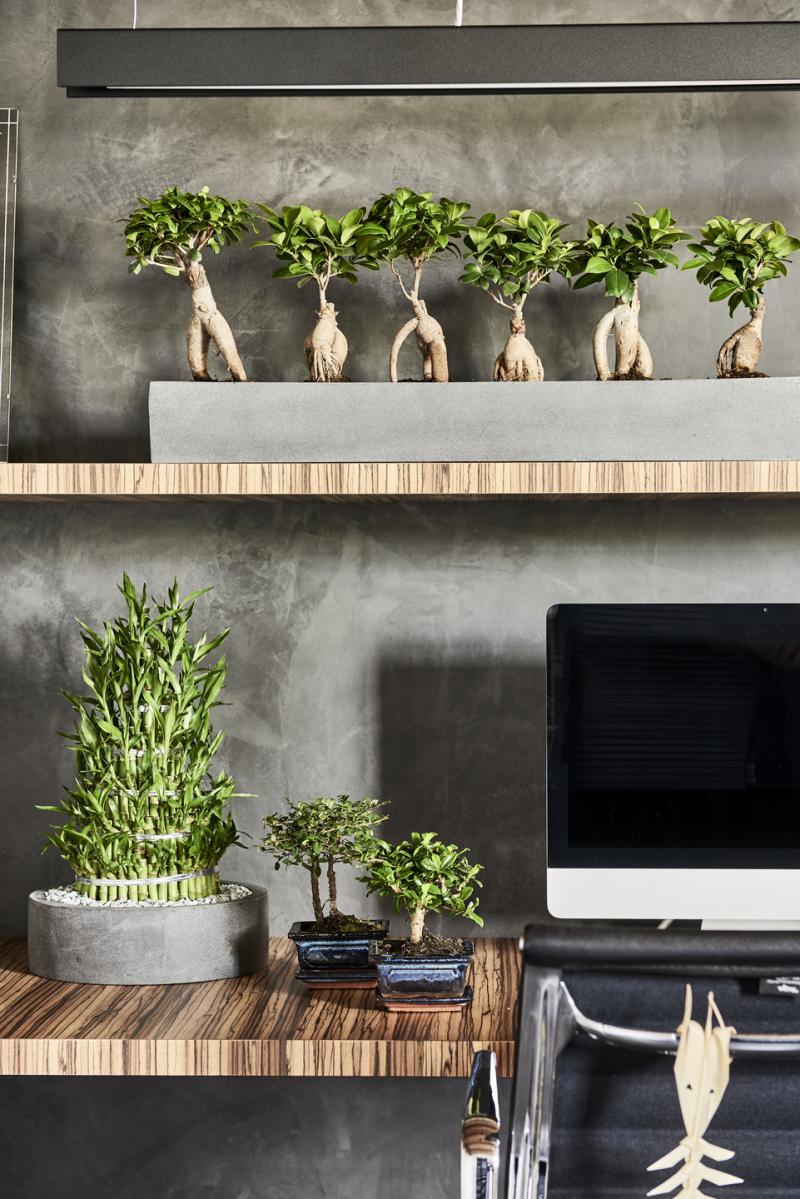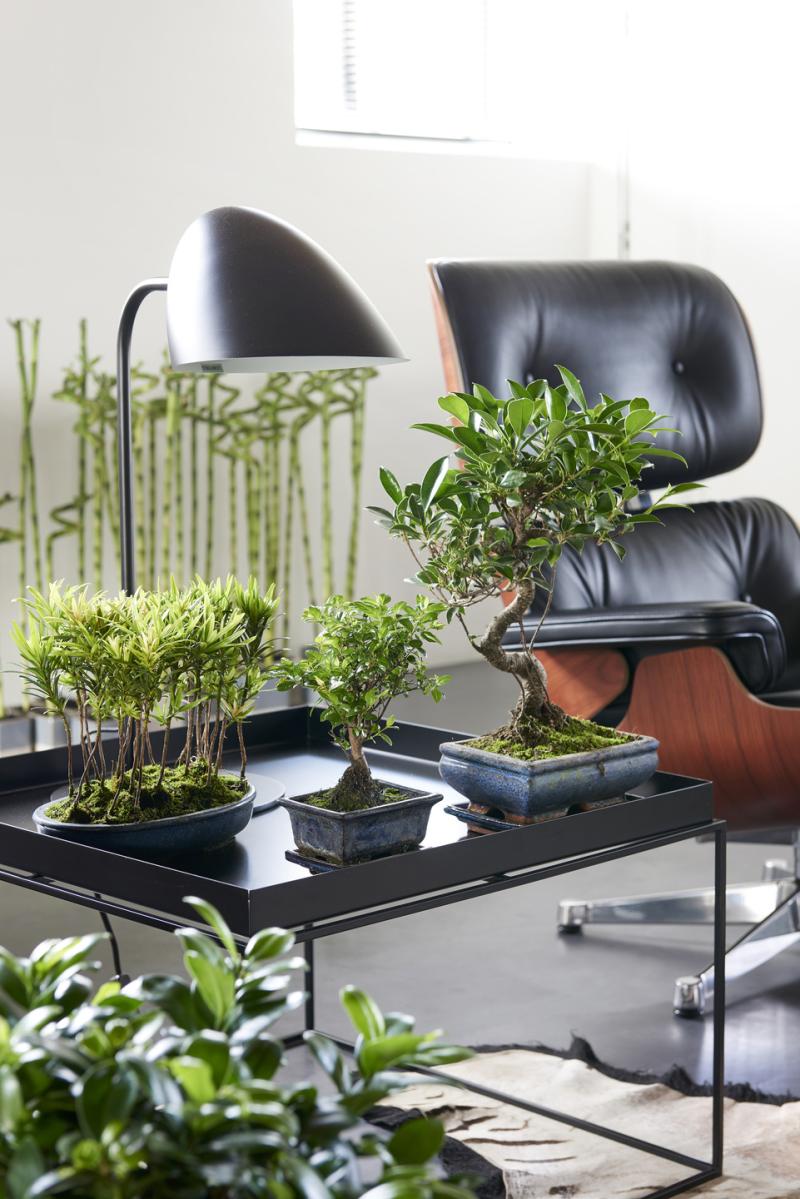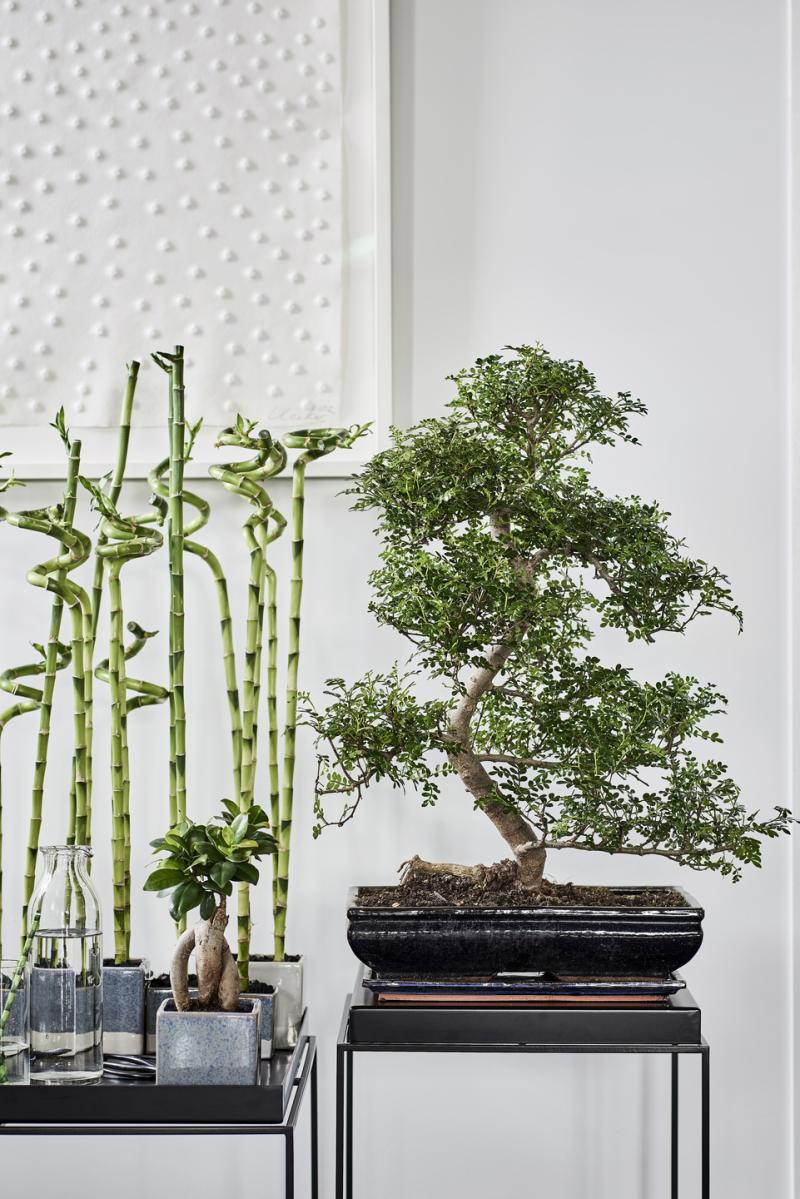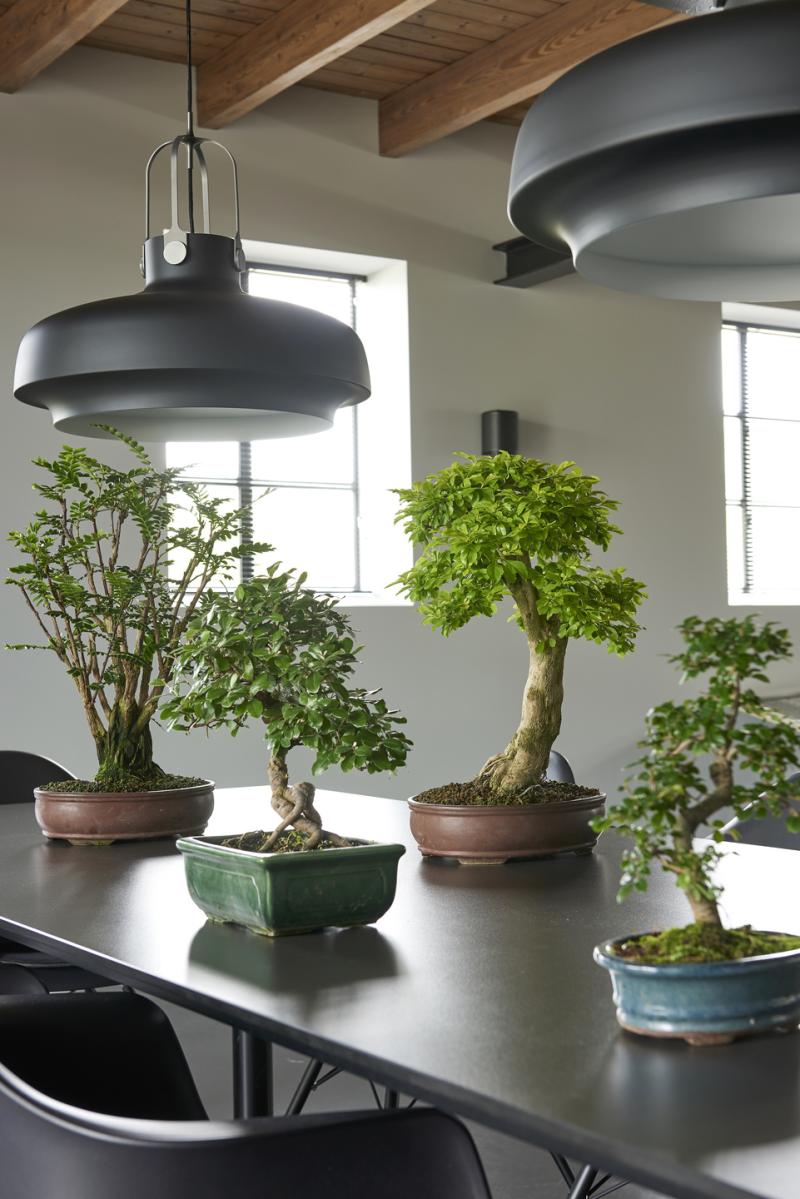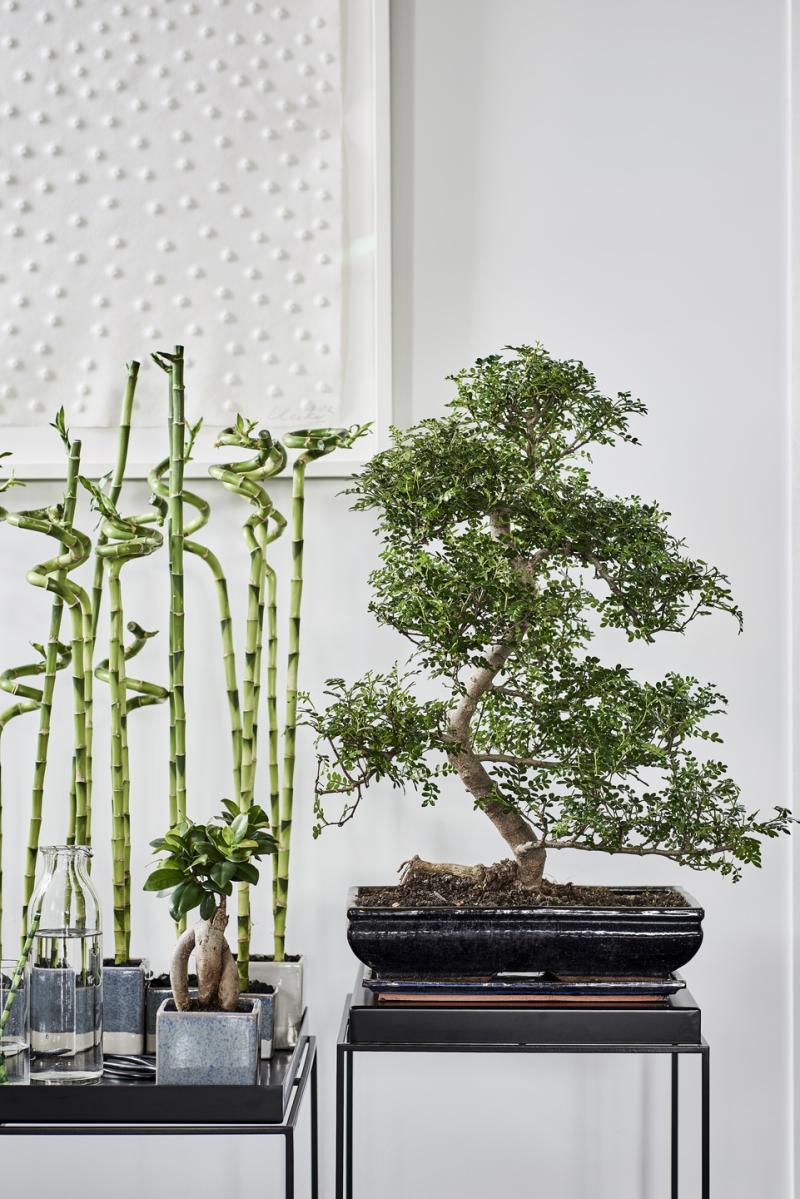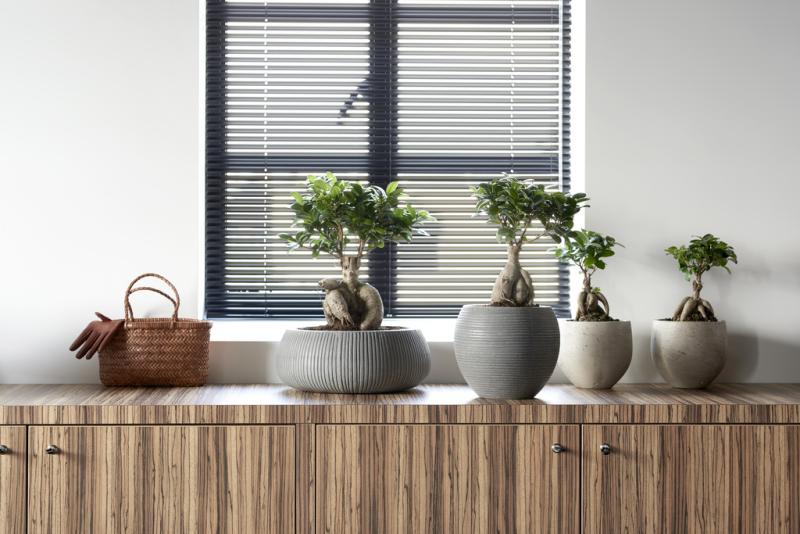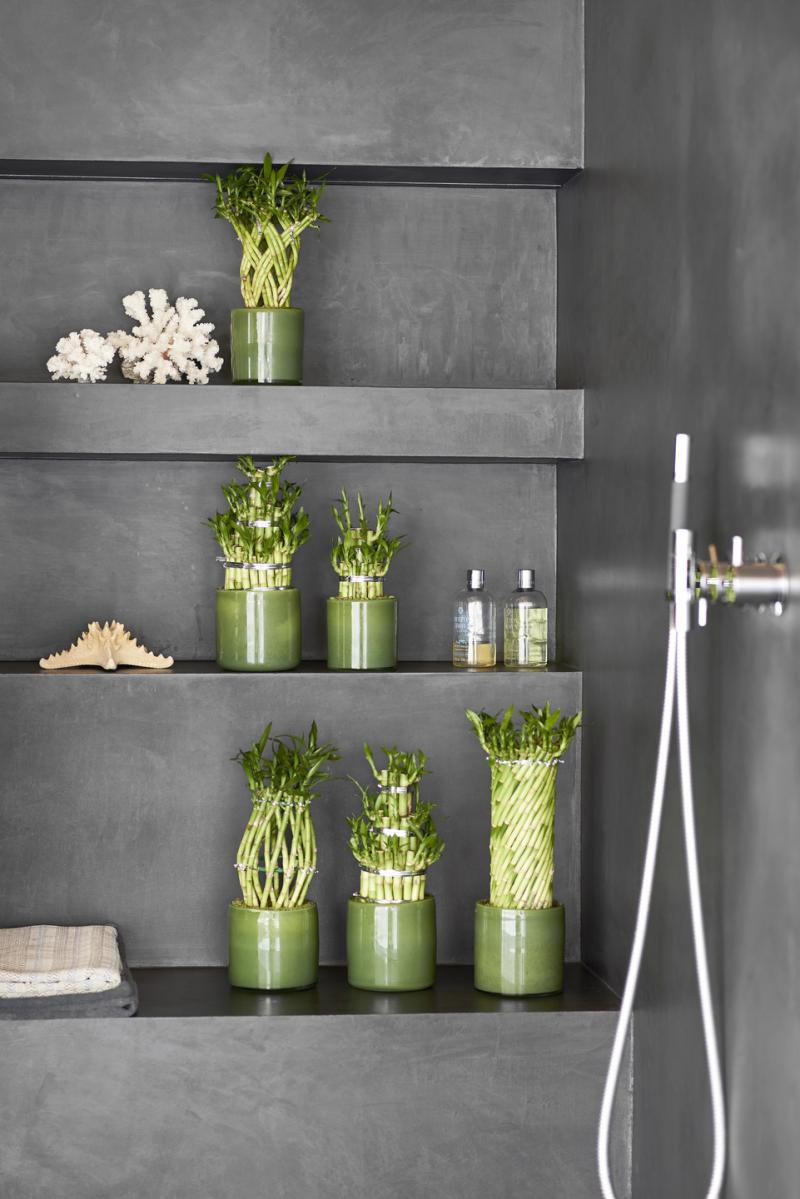May 2018: Zen plants Houseplants of the month
The story behind Zen plants
Bonsai, Ficus Ginseng and Dracaena lucky bamboo all have powerful shapes, natural strength and a stylised appearance. All three fit well with the growing interest in bringing more calm and meaning to our lives. They’re also perfect feature plants in the minimalist interior trend which is still very popular. Zen plants are easy to look after, attractive to look at and blessed with a serene look that really impacts on their surroundings.
Range
Bonsai in Japanese literally means ‘ tree in pot'. Woody plants are transformed into miniature trees by pruning and trimming whereby the appearance is determined by the plant’s essence. Examples of plants that are particularly suitable for bonsai are Chamaecyparis, pomegranate, Crassula ovata and Carmona retusa. Ficus species are currently the most popular.
Ficus ginseng is cultivated in southern China and Malaysia. A small-leafed Ficus microcarpa is grafted onto the distinctive trunk, which is then pruned into a bonsai shape. It can be narrow and tall or broad and low, depending on the pruning. To achieve the best aesthetic effect, the pot should not make up more than one third of the total height of plant.
Dracaena lucky bamboo is an eye-catching feature plant, and is available with straight and twisted branches, woven, as a mini bamboo forest or as a solo statement plant. All shapes need a lot of water, which is why they’re often sold in a glass bowl, vase or other vessel where the water is visible. This also contributes to the plant’s Zen look.
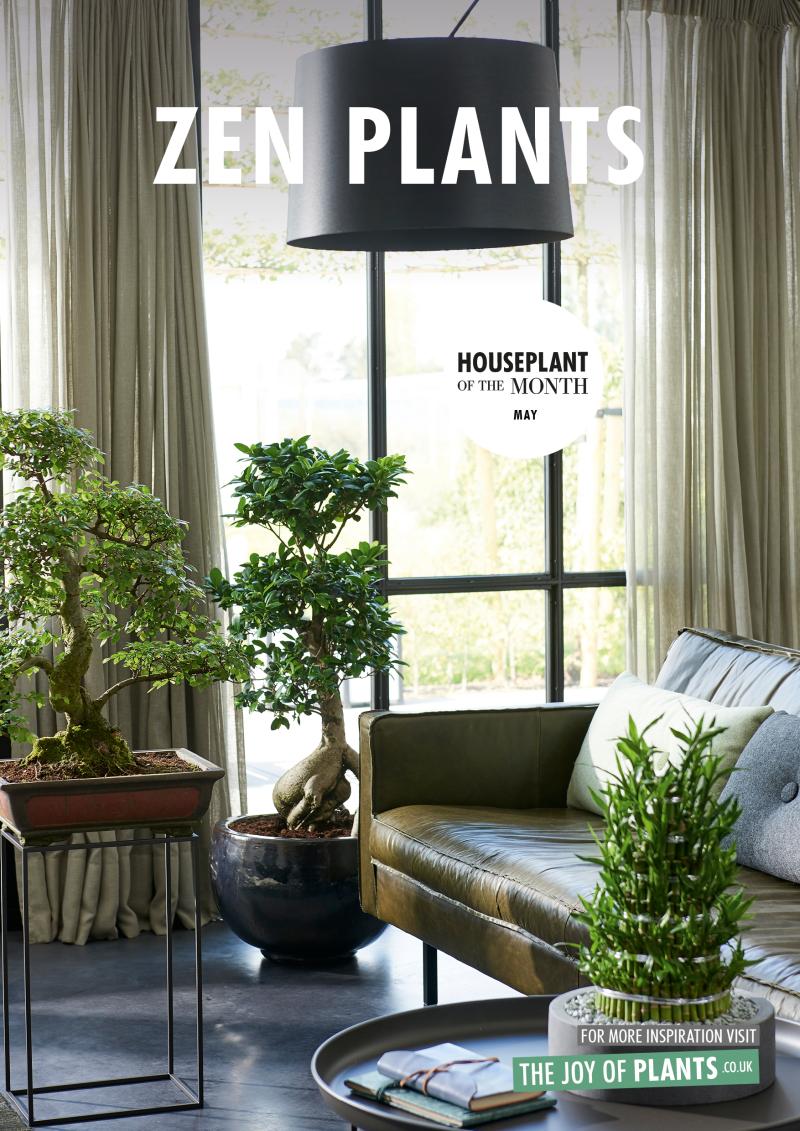
- Bonsai and Ficus ginseng need to be well-rooted. The trunk and foliage must also be attractively in proportion.
- A lack of light can cause leaf shedding. Check that the leaves are sturdy and the plant has been hardened.
- Check for mealybug and scale insects.
- Dracaena lucky bamboo should not have any yellow stems, and must be sold ‘on water’.
Origin
Zen plants as a phenomenon dates back from the end of the 14th century, when Zen Buddhists created stylised gardens of exceptional beauty in order to meditate. Respect for nature was crucial. The simplicity is deceptive: anyone who starts working with Zen plants will soon see that they bring depth to their location and become ever more interesting.
Care tips for consumers
- All Zen plants like a light spot with no direct sunlight.
- Bonsai and Ficus Ginseng like having slightly damp soil but not wet feet. Dracaena lucky bamboo should always be standing in a layer of water.
- Some plant food every 3 to 4 weeks is sufficient.
- If Zen plants grow too big, they can be pruned back.
- If the temperature remains above 15°C, these plants can also be placed on the patio.
Sales and display tips for Zen plants
Displaying Zen plants in an attractive and appropriate way can considerably boost turnover. Think of a water feature, oriental statues, LED candles with a moving flame, or an example of a plant altar as inspiration. Give the plants a bit of room against a plain pale background so that the unusual shapes stand out particularly well. Choose shiny black ceramic or rustic brown with glaze as the base to keep things calm and pure. Lighting with yellow tones instead of white light prevents the display from looking too cold.
Images of Zen plants
You can download and use the images below free of charge if you credit Thejoyofplants.co.uk
Zen plants poster
You can download the poster using the link below.

